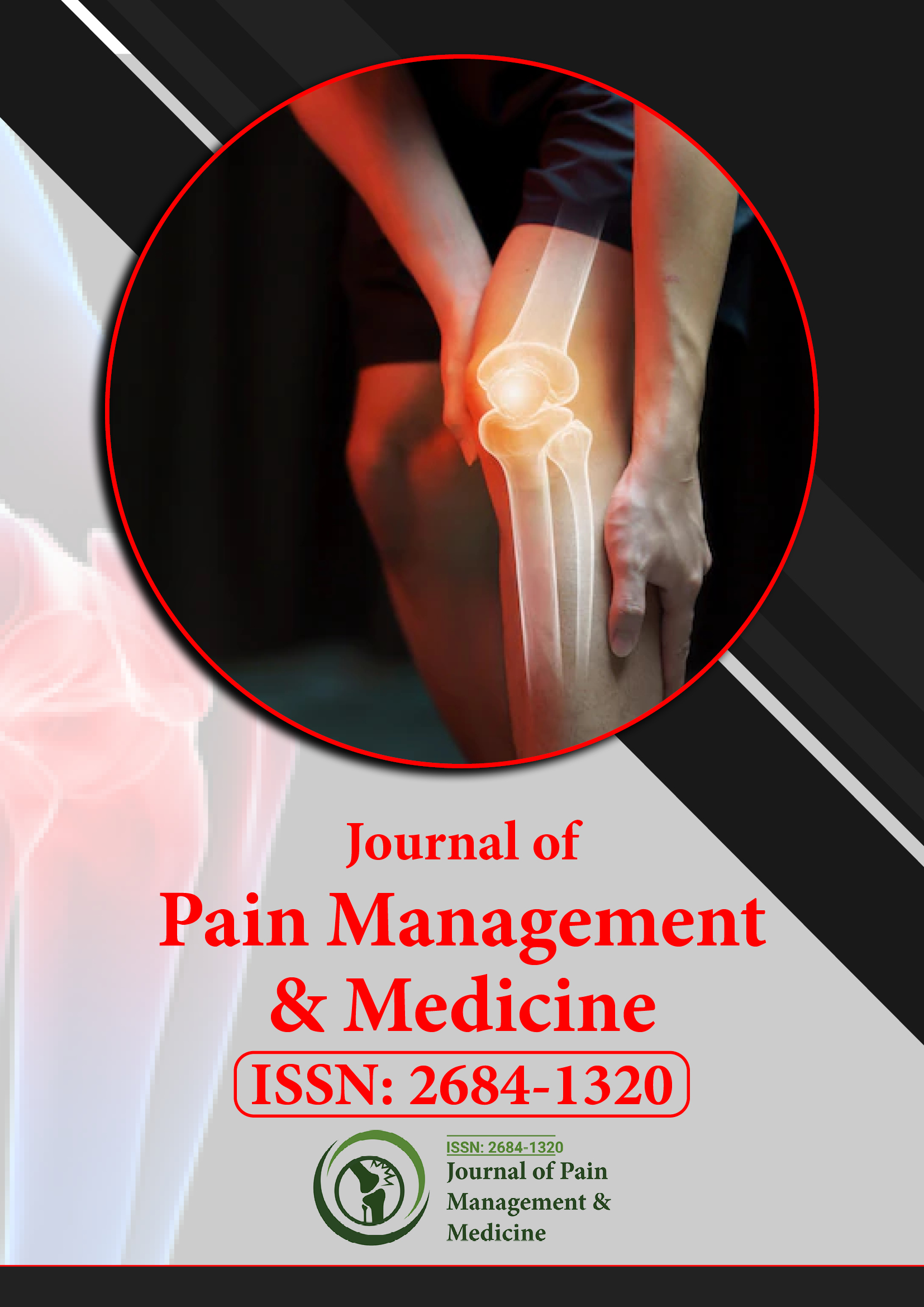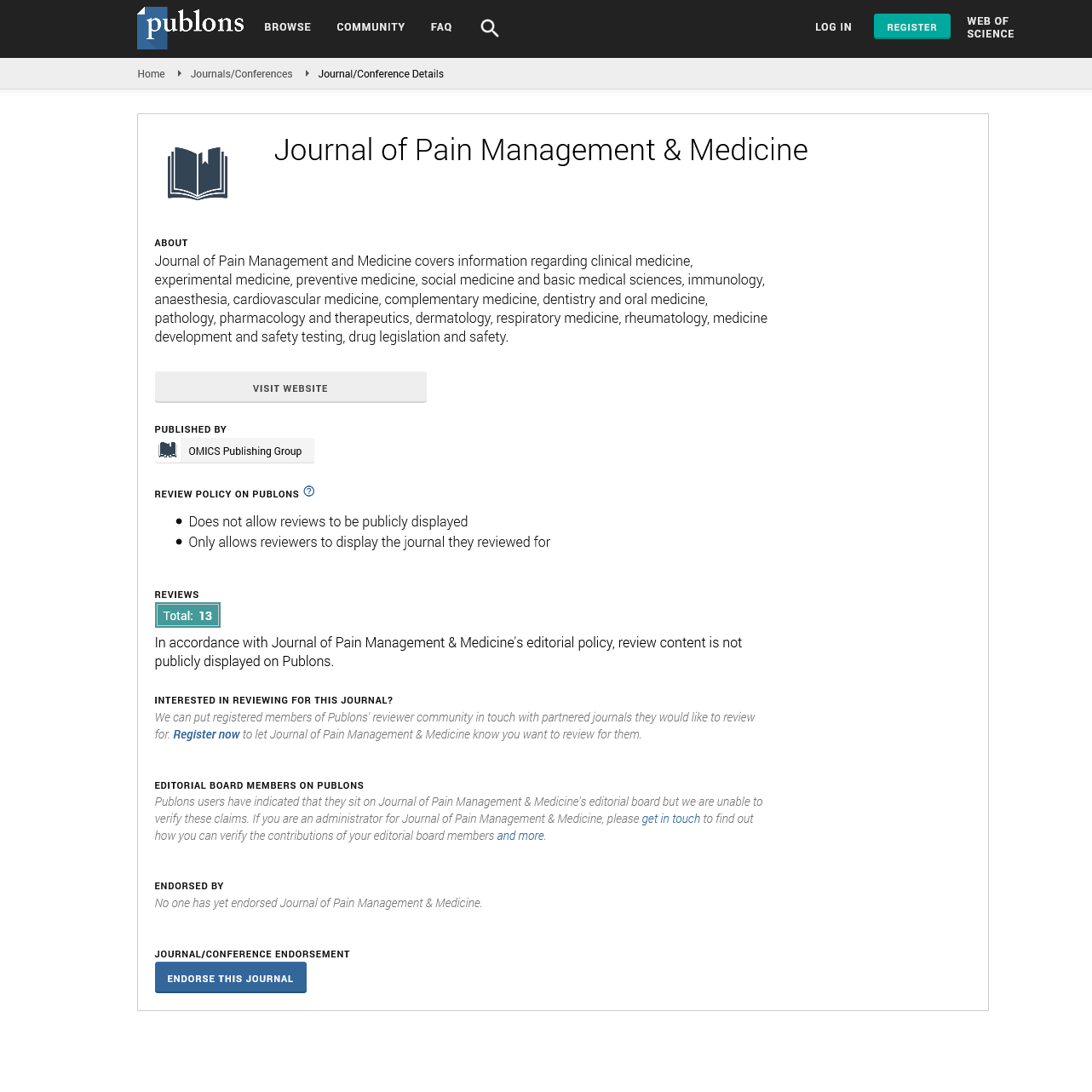Indexed In
- RefSeek
- Hamdard University
- EBSCO A-Z
- Publons
- Euro Pub
- Google Scholar
- Quality Open Access Market
Useful Links
Share This Page
Journal Flyer

Open Access Journals
- Agri and Aquaculture
- Biochemistry
- Bioinformatics & Systems Biology
- Business & Management
- Chemistry
- Clinical Sciences
- Engineering
- Food & Nutrition
- General Science
- Genetics & Molecular Biology
- Immunology & Microbiology
- Medical Sciences
- Neuroscience & Psychology
- Nursing & Health Care
- Pharmaceutical Sciences
Perspective - (2025) Volume 11, Issue 2
Impact of Opioid Stewardship Programs on Prescribing Patterns and Patient Outcomes in a Large Healthcare System
Henry Hurner*Received: 01-Mar-2025, Manuscript No. JPMME-25-28855 ; Editor assigned: 03-Mar-2025, Pre QC No. JPMME-25-28855 (PQ); Reviewed: 17-Mar-2025, QC No. JPMME-25-28855 ; Revised: 24-Mar-2025, Manuscript No. JPMME-25-28855 (R); Published: 31-Mar-2025, DOI: 10.35248/2684-1320.25.11.323
Description
The opioid crisis continues to grip many parts of the world, driven in part by inappropriate prescribing practices and the subsequent development of opioid use disorder. Opioid Stewardship Programs (OSPs), modeled after antimicrobial stewardship initiatives, aim to optimize opioid prescribing, reduce opioid-related harms, and improve patient safety. Evaluating the impact of OSPs on prescribing patterns and patient outcomes within a large healthcare system offers critical perspectives for informing best practices and shaping future policy.
Such an evaluation would ideally involve a comprehensive analysis of data from a large integrated healthcare system before and after the implementation of an OSP. This could include examining electronic health records, pharmacy dispensing data, and patient outcome data such as rates of opioid-related adverse events, hospitalizations, and opioid use disorder. The study should account for potential confounders, such as changes in prescribing guidelines or other concurrent interventions.
One key perspective is the impact of the OSP on opioid prescribing patterns. This includes assessing changes in the overall volume of opioids prescribed, the average daily dose, the duration of opioid prescriptions, and the use of specific opioid formulations (e.g., immediate-release vs. extended-release). The evaluation should also examine whether the OSP has influenced the prescribing of opioids for specific conditions or in particular patient populations (e.g., post-surgical pain, chronic non-cancer pain).
Another crucial perspective focuses on patient outcomes related to opioid use. This includes measuring the incidence of opioid-related adverse events, such as respiratory depression, sedation, and constipation. The evaluation should also assess the rates of opioid-related hospitalizations and emergency department visits. Critically, the study should examine the impact of the OSP on the incidence of new-onset opioid use disorder and the rates of opioid overdose.
From a clinical perspective, it is important to assess whether the OSP has affected pain management outcomes. While reducing inappropriate opioid prescribing is a primary goal, it is essential to ensure that patients with legitimate pain needs receive adequate analgesia. The evaluation should examine patient-reported pain scores, functional status, and satisfaction with pain management.
The specific components of the OSP are another important consideration. OSPs can vary widely in their scope and intensity, ranging from simple educational interventions to more comprehensive programs that include prescribing guidelines, prior authorization requirements, and active monitoring of opioid prescribing. Comparing the effectiveness of different OSP components can help to identify the most impactful strategies.
From a healthcare system perspective, it is important to assess the feasibility and sustainability of implementing and maintaining an OSP. This includes evaluating the resources required (e.g., personnel, technology), the costs associated with the program, and the impact on workflow and clinician burden.
The long-term effects of the OSP are also crucial to consider. While immediate changes in prescribing patterns and patient outcomes may be observed, it is important to assess whether these effects are sustained over time. Longitudinal data are needed to determine the long-term impact of OSPs on opioid use disorder rates and opioid-related mortality. Finally, from a public health perspective, it is important to consider the broader impact of OSPs on the community. Evaluating the impact of OSPs on the diversion of opioids and the illicit opioid market is also important.
In conclusion, evaluating the impact of opioid stewardship programs on prescribing patterns and patient outcomes within a large healthcare system offers a multifaceted perspective on a critical public health issue. By rigorously assessing changes in prescribing, patient safety, pain management, and long-term outcomes, such evaluations can provide valuable evidence to guide the development and implementation of effective OSPs and contribute to efforts to mitigate the opioid crisis.
Citation: Hurner H (2025) Impact of Opioid Stewardship Programs on Prescribing Patterns and Patient Outcomes in a Large Healthcare System. J Pain Manage Med. 11.323.
Copyright: © 2025 Hurner H. This is an open access article distributed under the terms of the Creative Commons Attribution License, which permits unrestricted use, distribution, and reproduction in any medium, provided the original author and source are credited.

